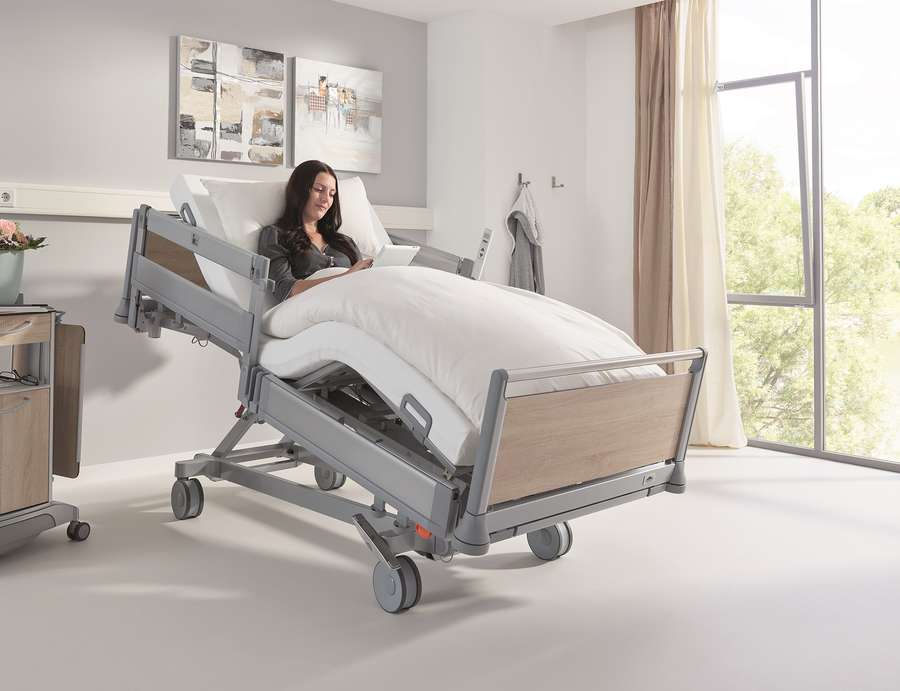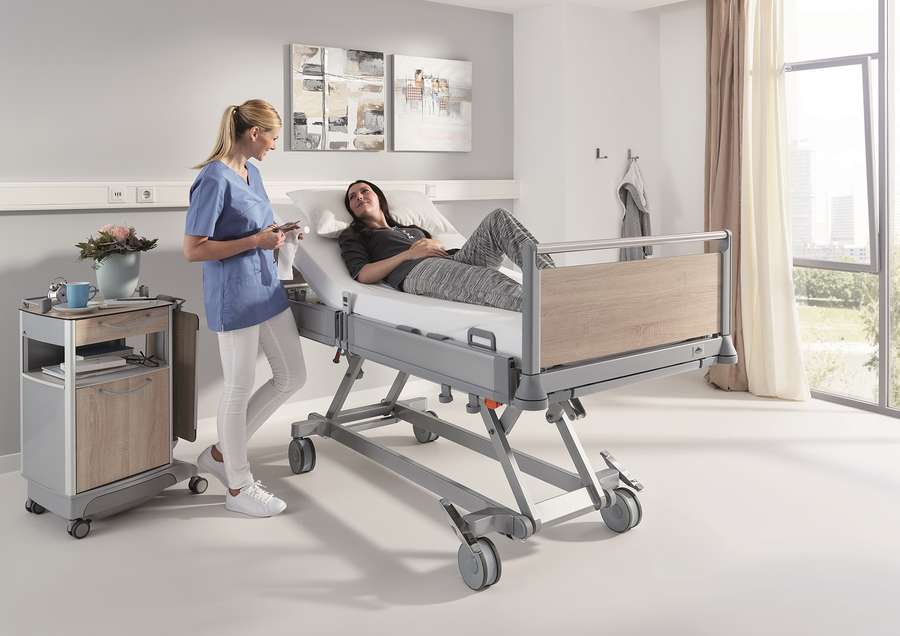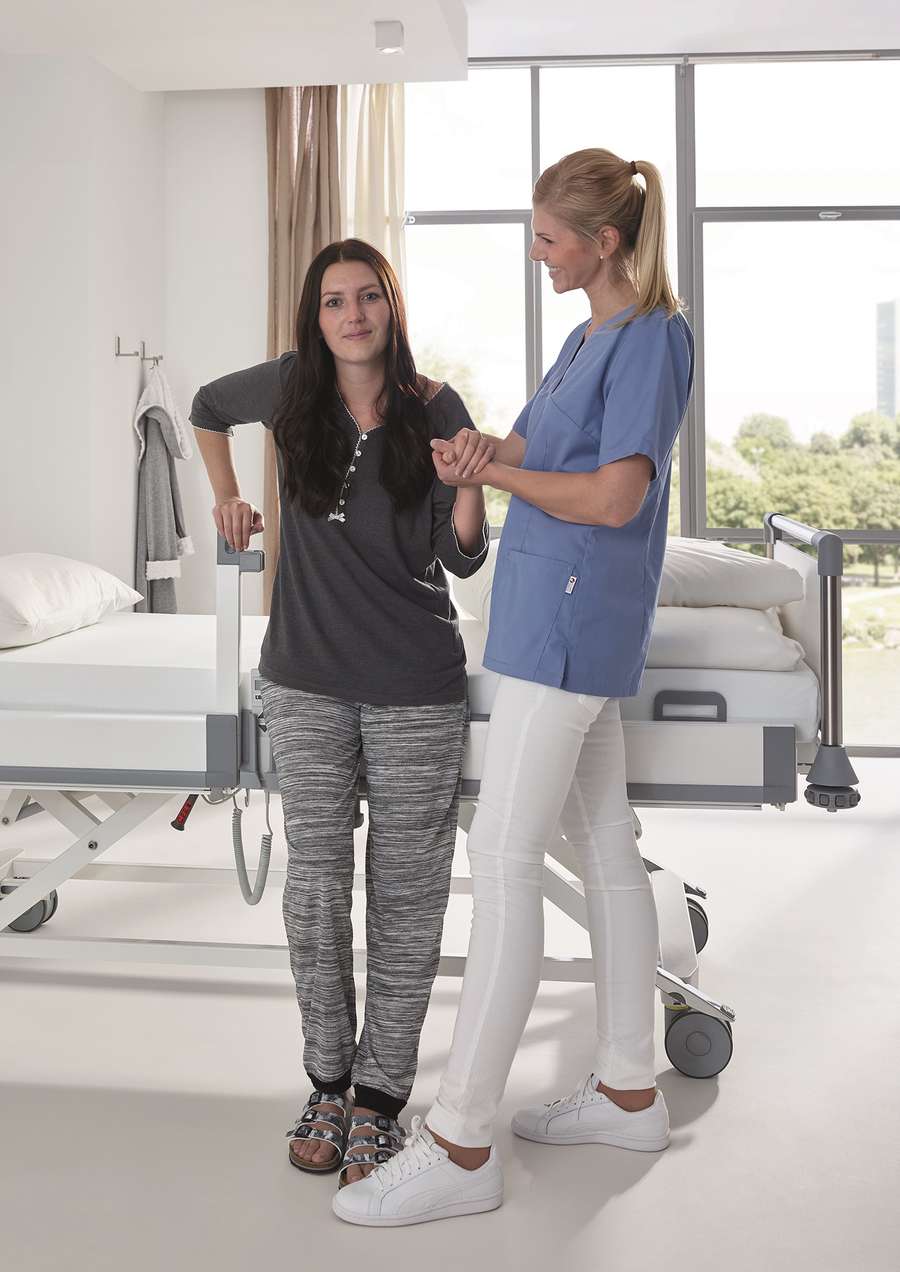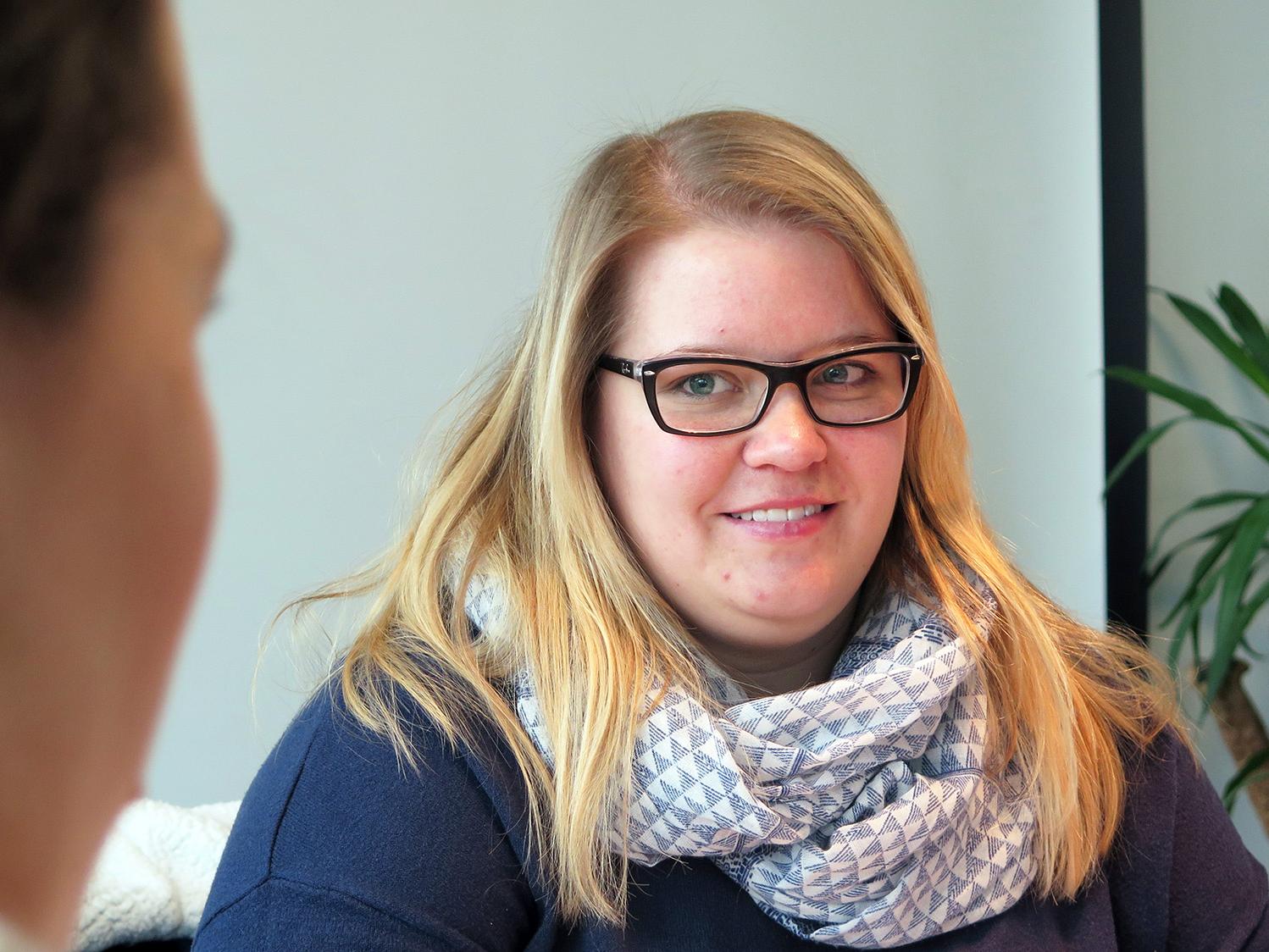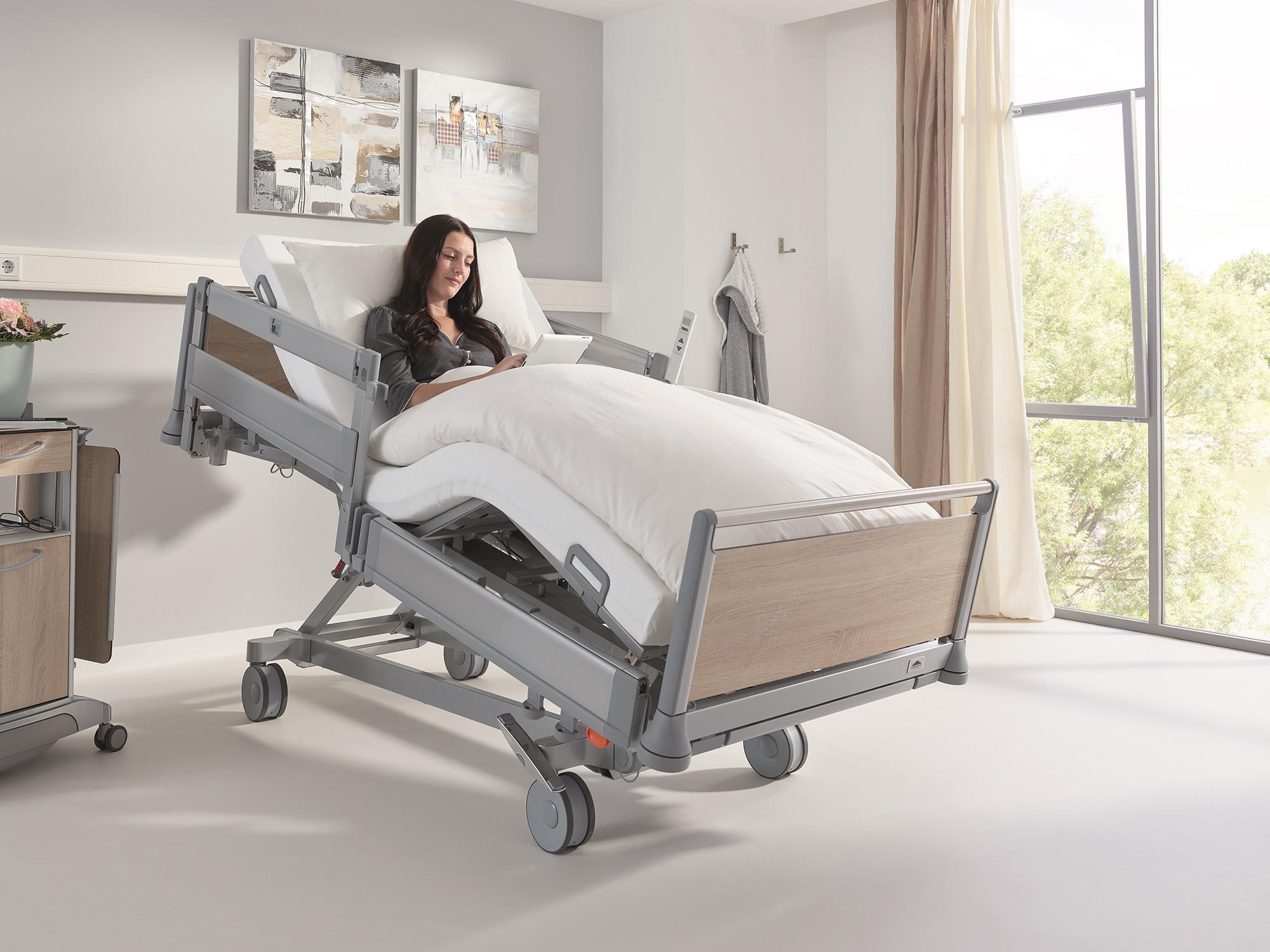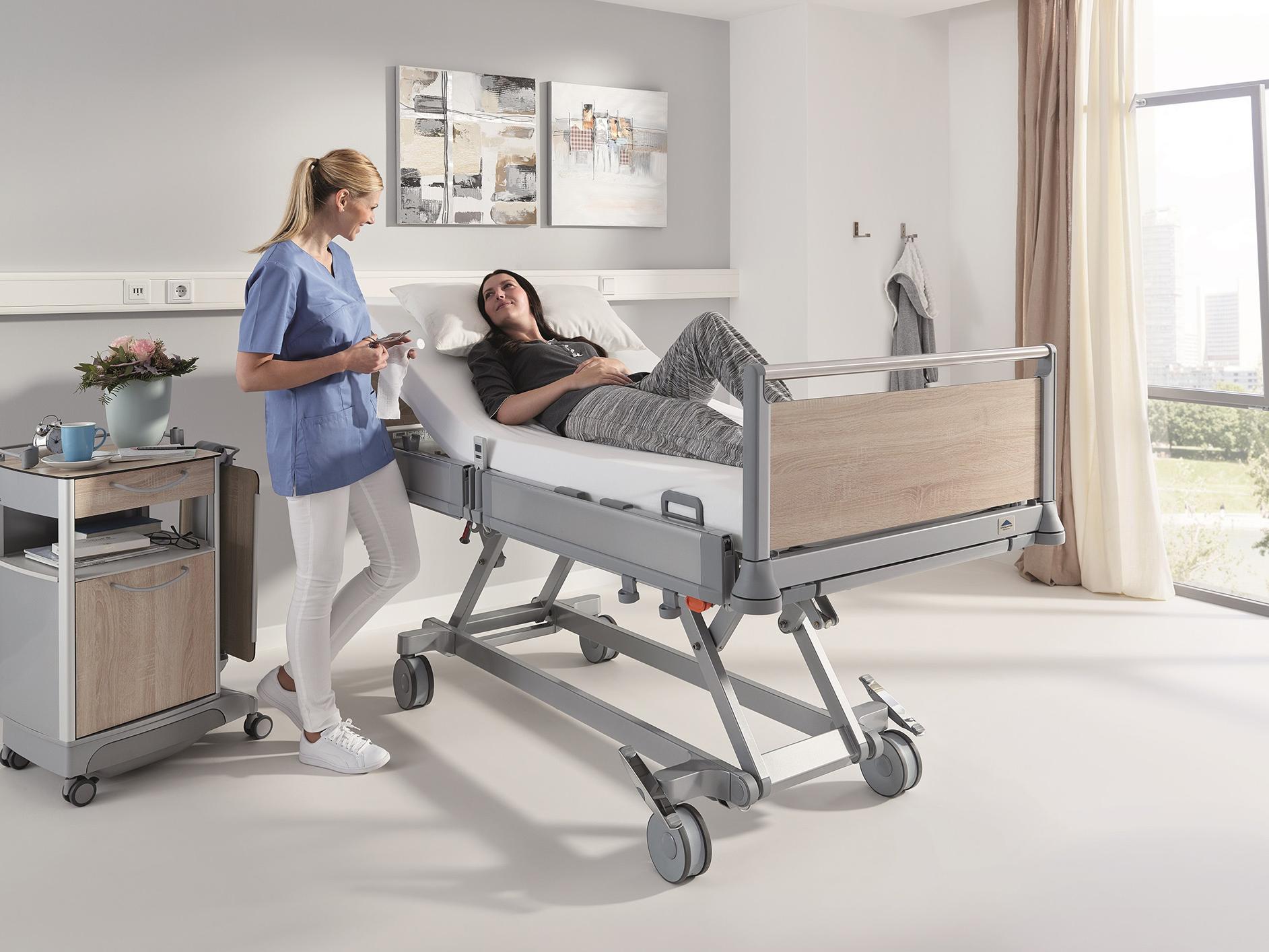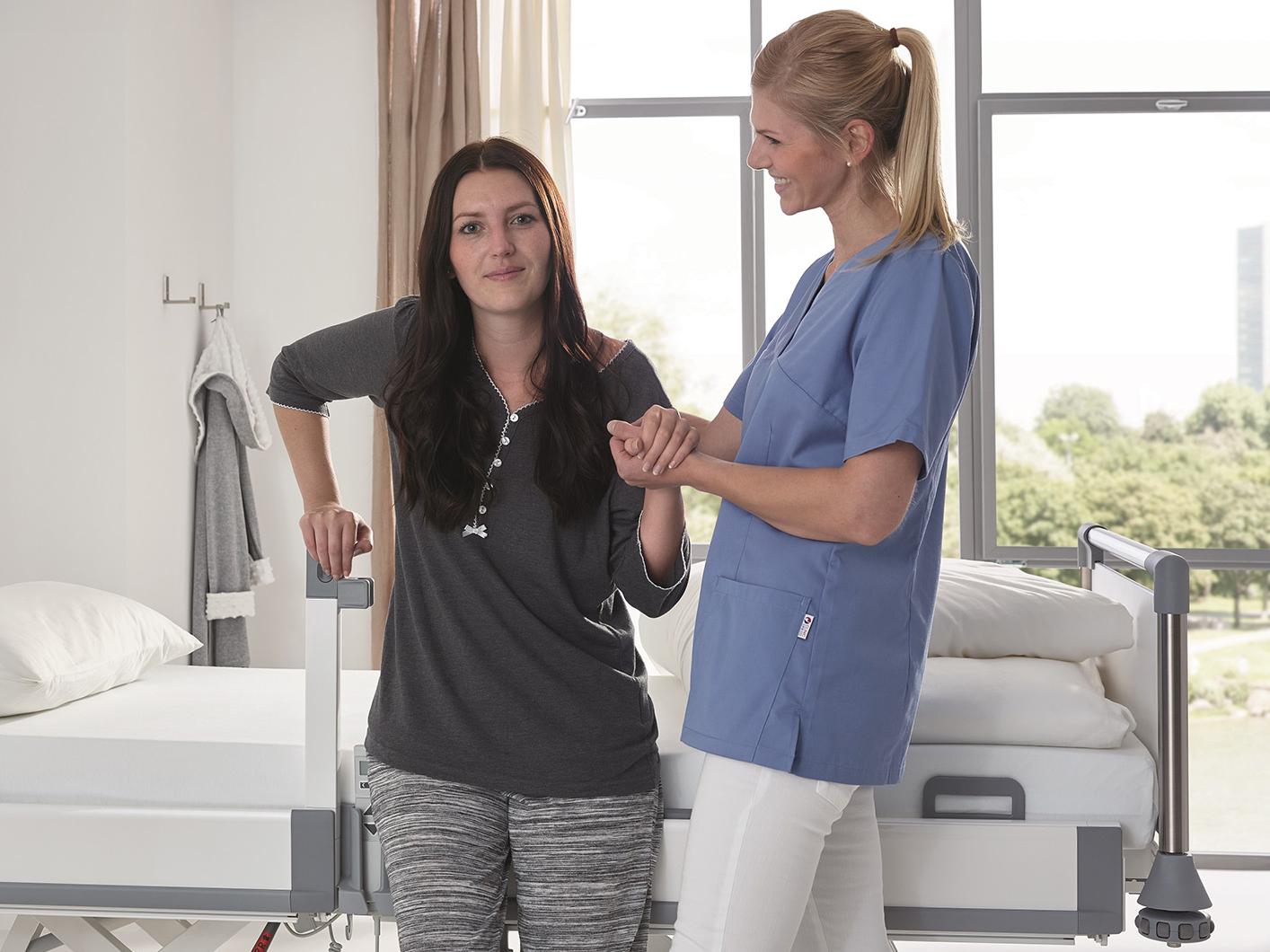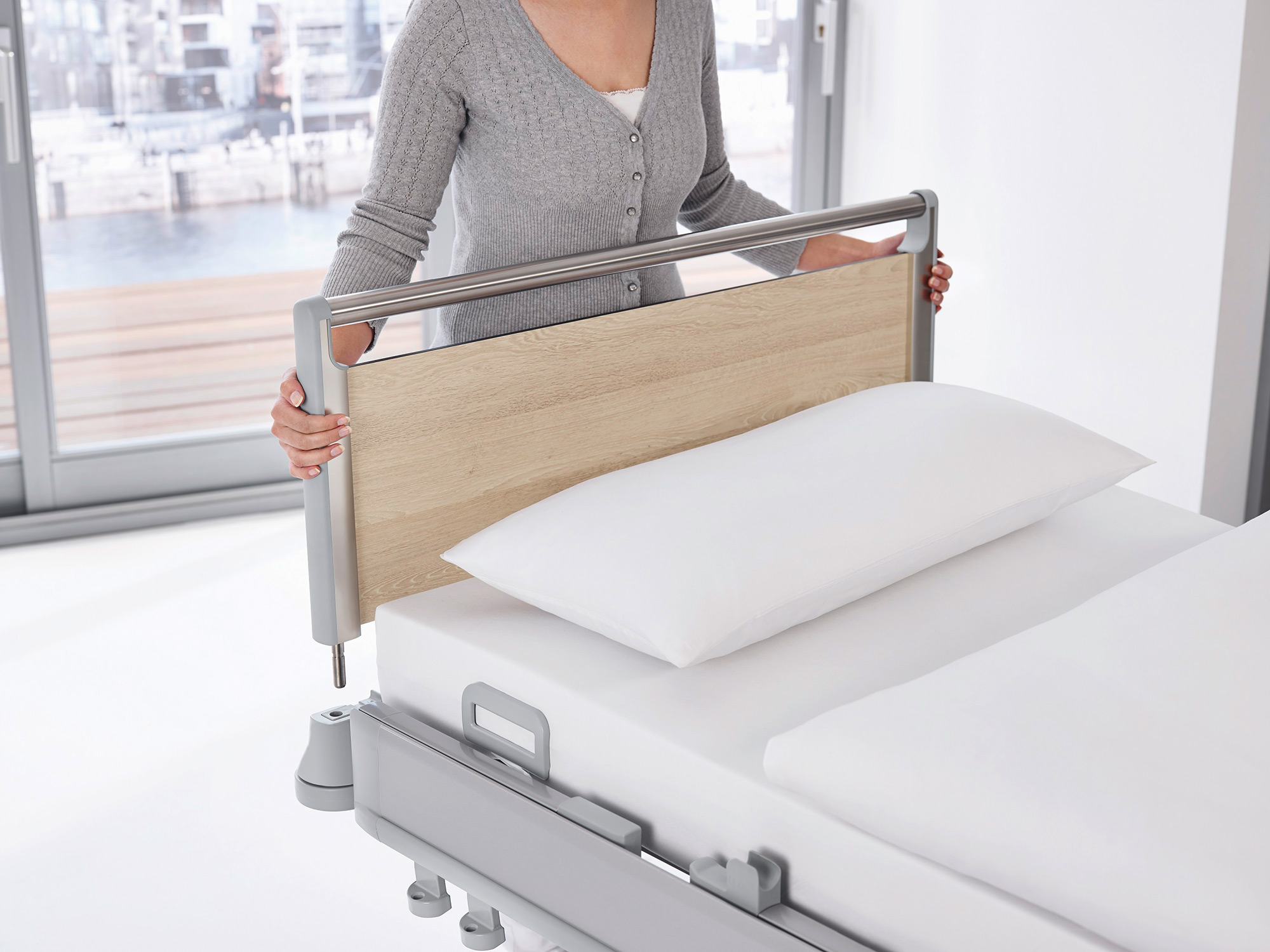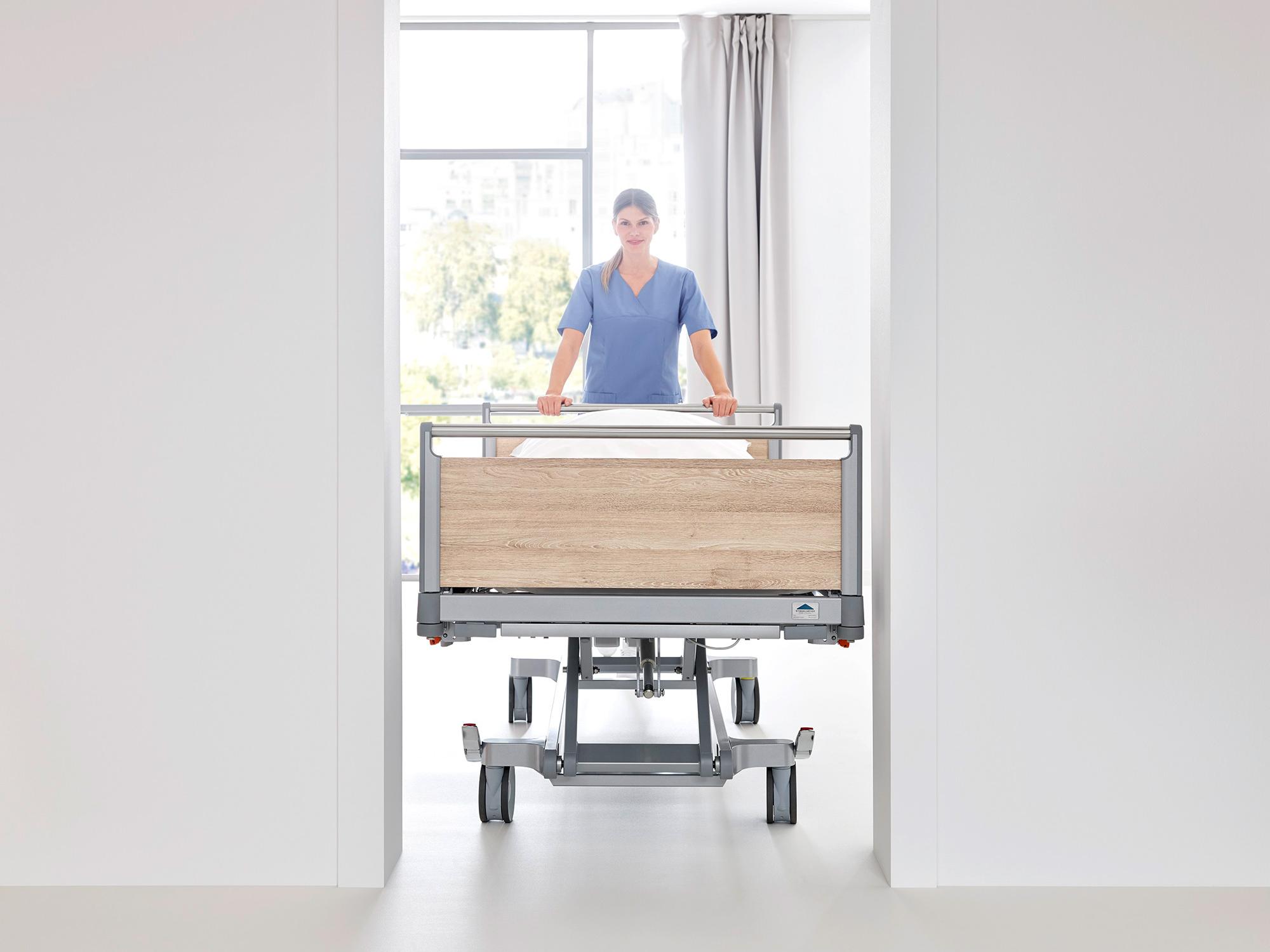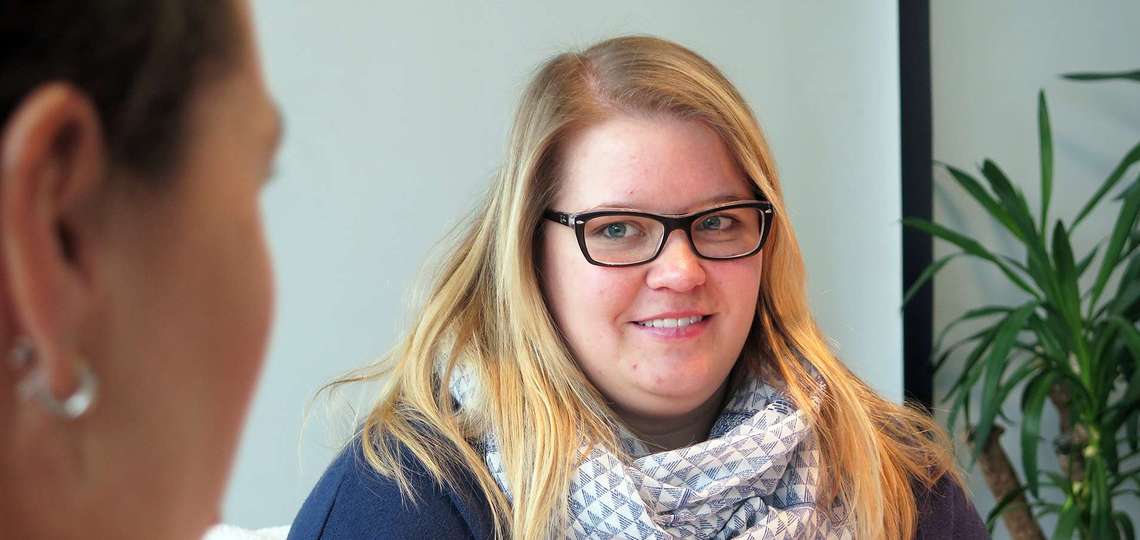
Workplace “hospital bed” and its challenges
An interview with nursing scientist Laura Tesch from the Klinikum Herford hospital
The workplace “hospital bed” – this represents a challenge for nursing staff every single day: a challenge with many difficult, unforeseeable but also pleasant and fulfilling aspects. At Stiegelmeyer, we are interested in how our beds can make these tasks even easier and at the same time promote the recovery of patients. The FORUM team discussed this with Laura Tesch from the Klinikum Herford hospital in Germany.
Ms Tesch has a work-study degree in nursing science and is currently doing a second degree course in social and health care management. She has been working as a certified nurse in the intensive care unit in Herford for four years.
There, our Puro hospital bed is being used. What tasks need to be carried out at the workplace “hospital bed”? “In our intensive care unit, almost all of our work takes place with the patient in or around the bed,” says Ms Tesch. “First, there’s the question of how I position the patient – should he or she be lying down or sitting? We often work with the chair position, especially with patients whose breathing is supported by a ventilator or who are on the path to recovery.”
Basic care tasks at the bed
The hospital bed workplace often also includes all types of nursing work for the patient. “In the intensive care unit, we always wash the patients in bed,” says Ms Tesch. “In the normal wards, patients who are allowed to get up can go to the bathroom. But there, too, many people need to be washed in bed.” In Herford, they no longer use water for this, unless the patient is particularly dirty. Instead, the nursing staff use antiseptic washing gloves that are removed fresh from their packaging. “We use these to try and guard against hospital germs,” explains Ms Tesch. If desired, the moist gloves can be warmed up in a microwave so that they feel pleasant to the touch. During the washing process, the bed linen is changed at the same time. If the body is washed from the front, only one member of staff is needed. If the patient needs to be positioned on his side for back washing, a second person is required.
The motorised height adjustment of the beds plays an important role in this basic care. “The nurse always raises the bed so that the mattress is at hip height,” says Ms Tesch. In the intensive care unit, the height adjustment is the most frequently used adjustment function. When the patient is awake and no work is currently underway, the bed is usually set to its lowest position in order to prevent fall injuries.
The function of the safety sides
“We also nearly always use safety sides in the intensive care unit,” reports Ms Tesch. “Most of our patients have at least eight cables attached to their body. Getting up could be fatal, because there would be a risk of bleeding to death.” Once patients are able to sit on the edge of the bed on their own again, we often only raise the safety side at the head end. This gives patients enough free space to leave the bed comfortably. When the bed is in the chair position, the safety sides hold all the supporting cushions and blankets in place.
The MultiFlex+ safety sides for the Puro have an ergonomically shaped middle post that can be used as a mobilisation aid. “We like to use this for the first attempts at mobilisation from the edge of the bed,” explains Ms Tesch. “When patients have this to hold on to, they feel much more secure.” Staff particularly appreciate the benefits of the Puro safety side, which, compared to older models, makes it more difficult for patients to stretch their legs out between the bars.
Operation with the LCD handset
The Puros in Herford are controlled by a modern LCD handset that allows all of the adjustments to be made using just three buttons and a large display. How do patients and nurses get along with it? “Where the normal adjustment functions for the patients are concerned, everything worked well right from the start,” says Ms Tesch. “Setting the Trendelenburg position proved more difficult – some of the staff had to ask more often how to do this. Now, however, everyone is getting on well with the LCD handset. The Trendelenburg position is used at the staff operating level. The LCD handset offers different tailor-made levels for patients, nurses and technicians. This guide (link) describes how these can be used simply and intuitively.
With modern hospital beds such as the Puro, the head and footboards can be quickly unlocked and removed to give better access to the patient. Is this option used in Herford? “If people in intensive care need to have a central venous catheter placed in their neck or a breathing tube fitted, we remove the headboard,” says Ms Tesch. “The doctors can then work unhindered.”
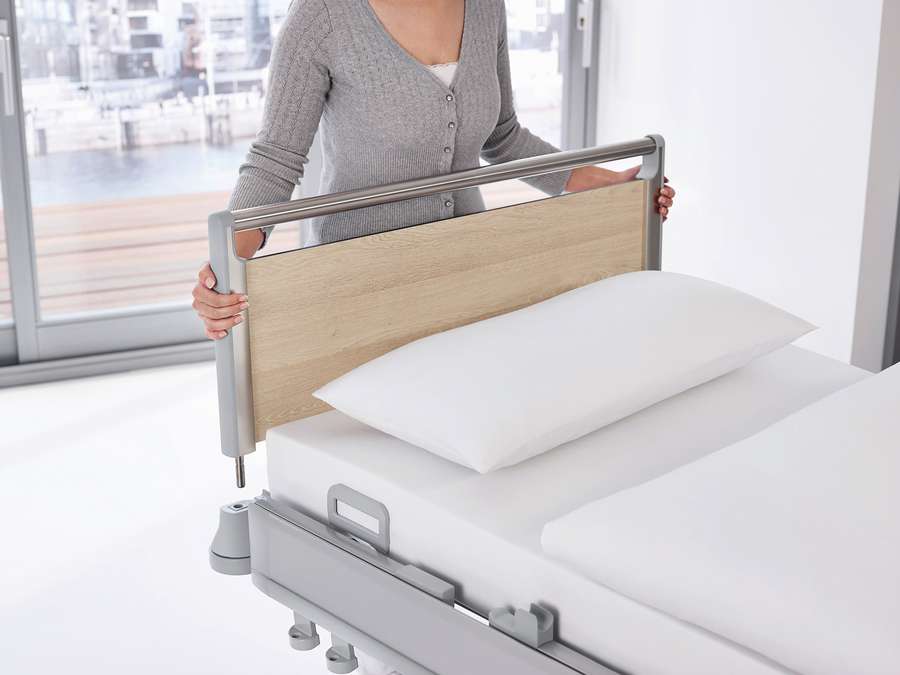
Tall and heavy patients
On average, German citizens are getting taller and heavier – how do you deal with this in hospitals? “In the case of tall patients, we use the integrated bed extension and request a foam pad from our central bed management department to extend the mattress,” says Ms Tesch. “In the case of sedated patients who need to maintain their body awareness, a point of contact with the footboard can also be good – so that they know: That's where my body ends!”
“Heavy patients weighing up to 160 kg are no longer uncommon today,” says Ms Tesch. This is no problem for Stiegelmeyer's modern beds with a safe working load of 260 kg. For patients weighing 200 kg or more, however, normal hospital beds are sometimes not spacious enough – in this case, the hospital rents special beds.
Transport and hygiene
In the intensive care unit, patients are often transported while in the bed – for example to the operating theatre, or for computer tomography or other examinations. And if the patient is transferred to another ward, he or she keeps the same bed. This means that good manoeuvrability, as demonstrated by the Puro, is important. In the case of intensive care patients, a doctor must always be present during transport, which means that there is an extra person to help with moving the bed.
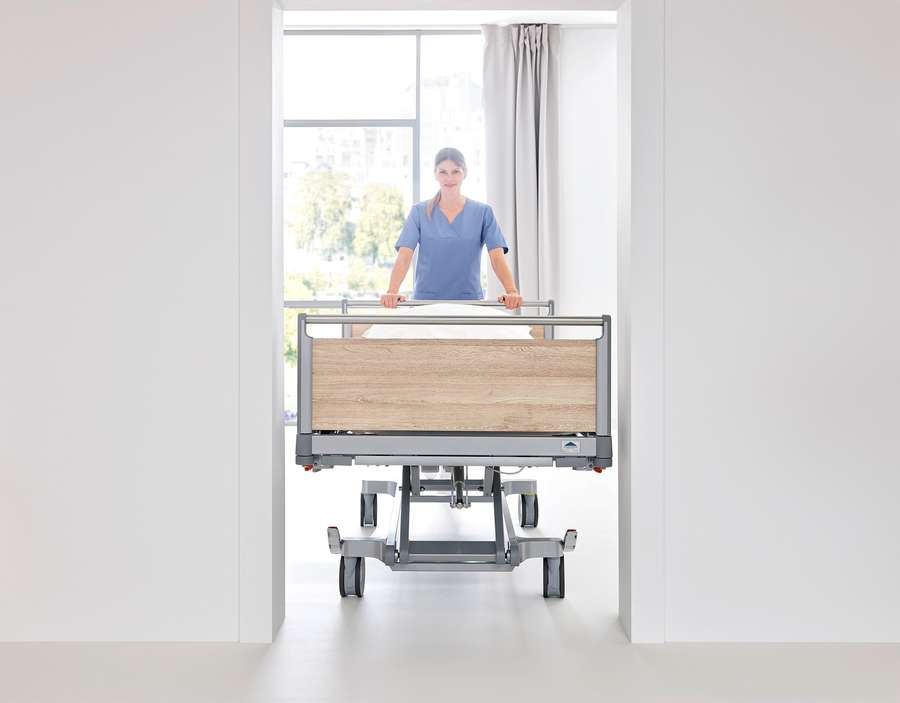
Each bed is cleaned before a new patient occupies it. In the intensive care unit in Herford, the nursing staff cover used beds with plastic film and push them out into the corridor. They are then picked up from there and manually prepared in an in-house washing facility. “If an emergency patient bleeds or loses other bodily fluids that contaminate the safety sides, for example, the safety sides will be cleaned immediately with disinfectant by staff on the ward,” explains the nursing scientist.
How do nursing staff stay fit?
How do the nursing staff stay fit in the face of all these everyday physical and psychological challenges? “We try to take as few experiences home with us as possible, but sometimes it does happen,” says Ms Tesch. “We all have our hobbies to give us balance. Some do a lot of sports, others read. You are friends with your colleagues, which means you can talk some situations through. Otherwise, everyone in the care and health sector applies a certain closeness versus distance approach: What can I allow to affect me personally, what is too much? You learn to deal with it – for example, by not looking after patients you know personally.”
Laura Tesch is happy and full of energy during our conversation, despite having just worked a night shift. She schedules her sleep and activities carefully so that she can easily switch between the three shifts. The workplace “hospital bed” gives life its rhythm.

